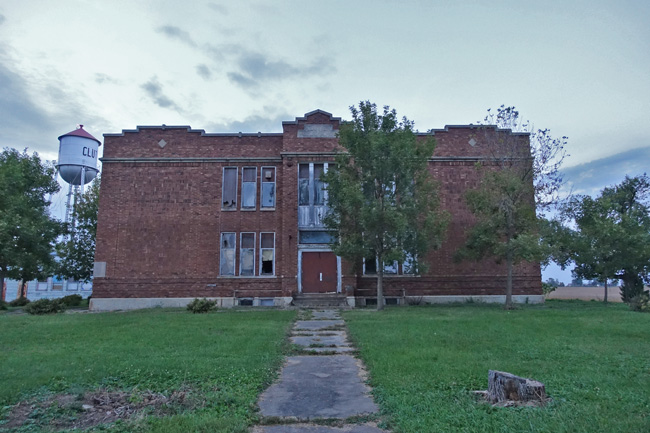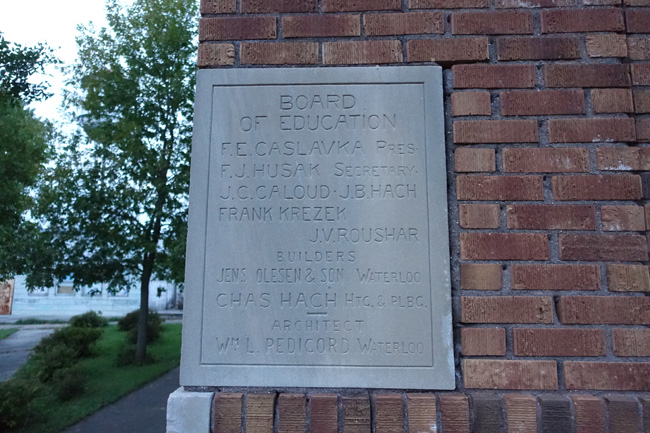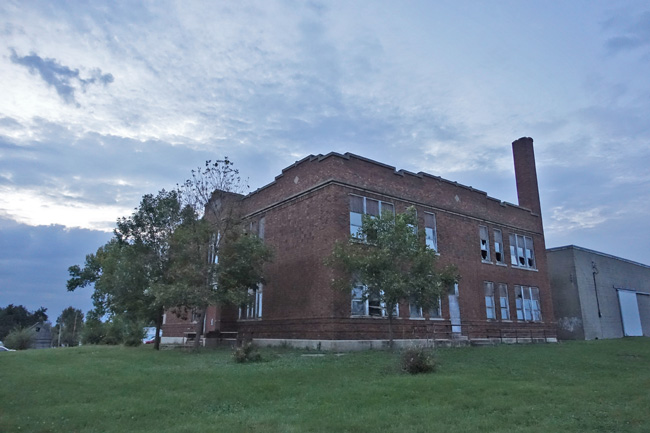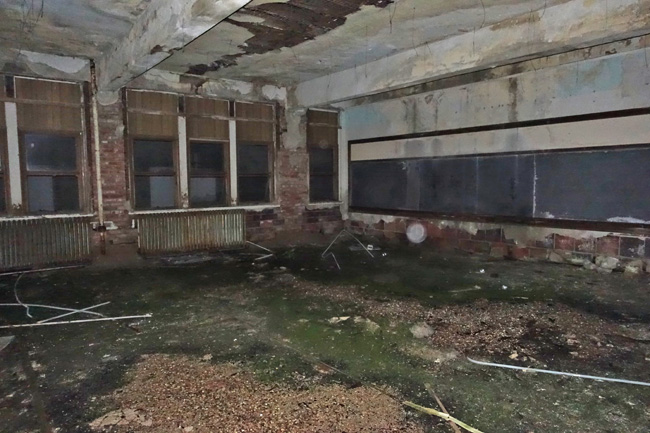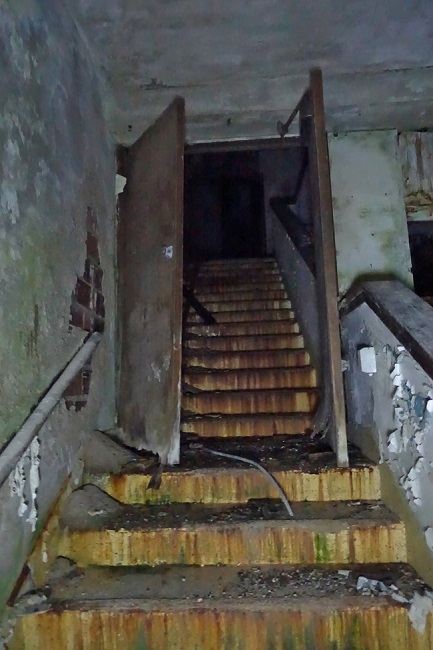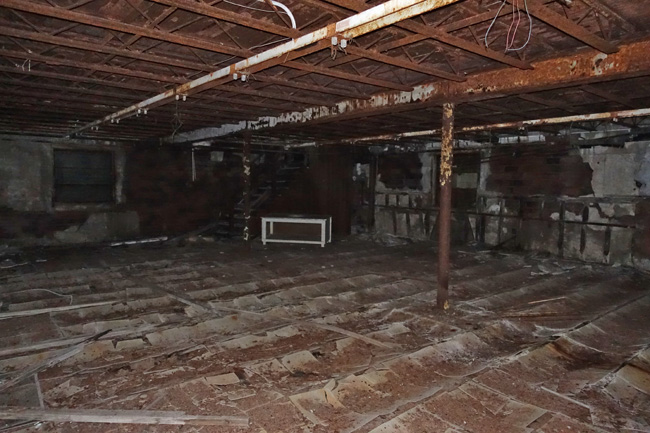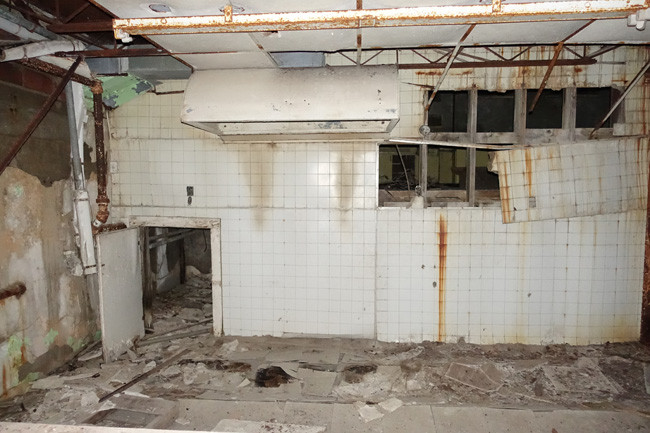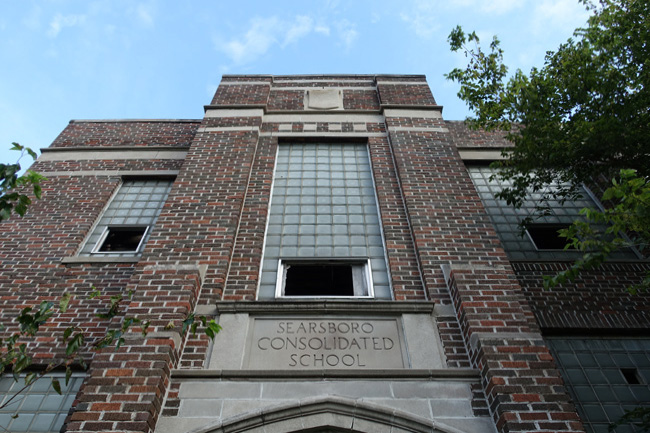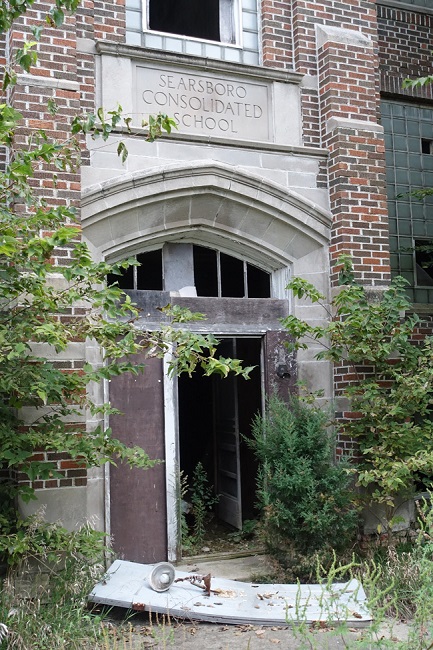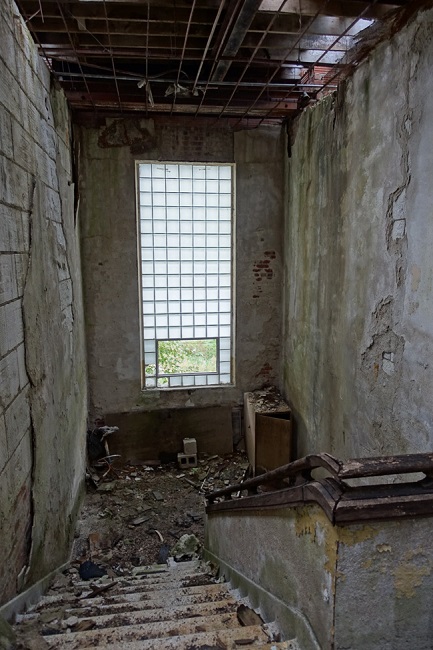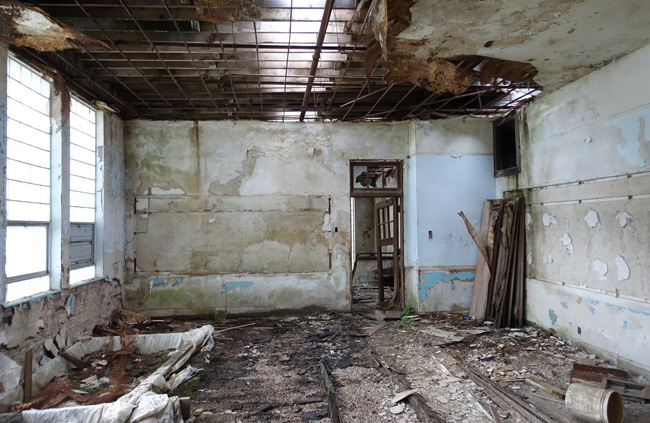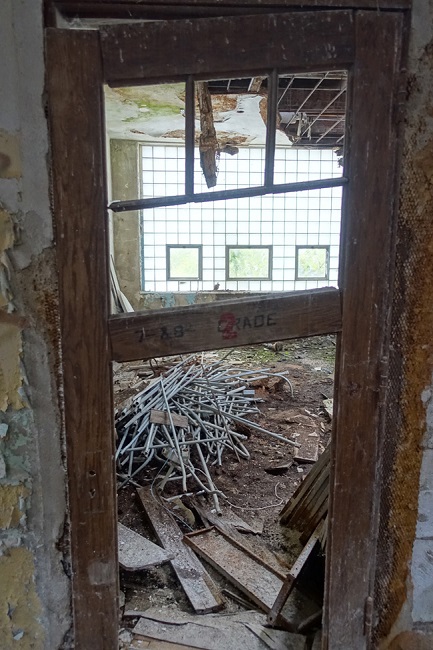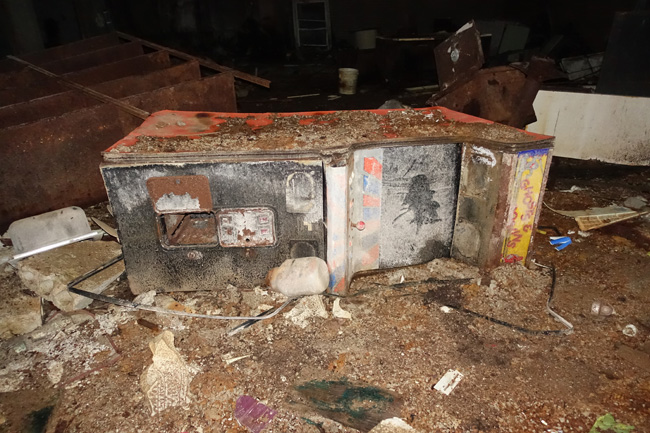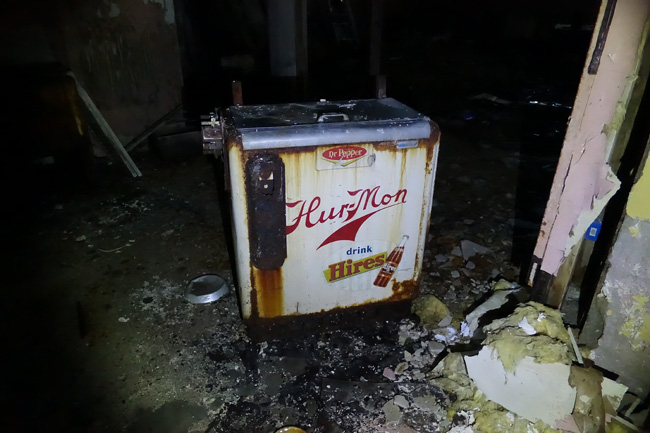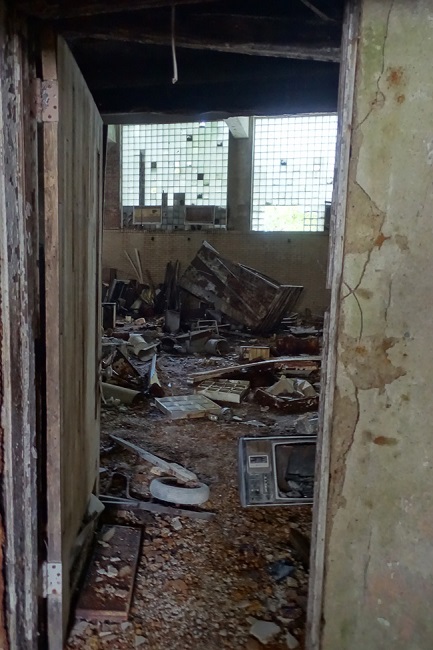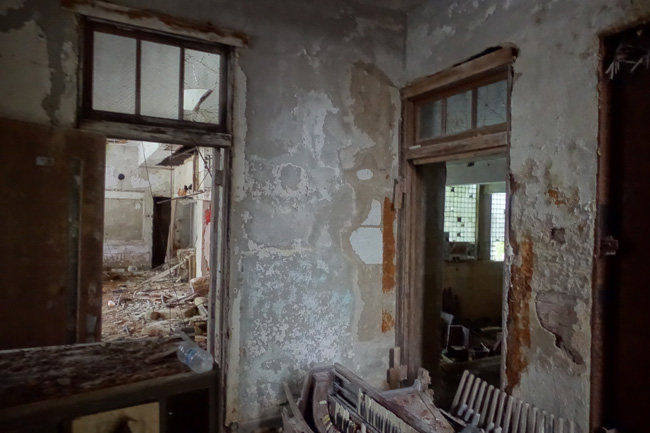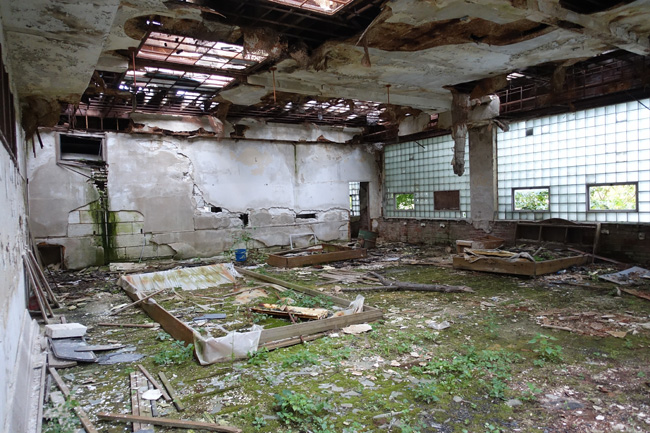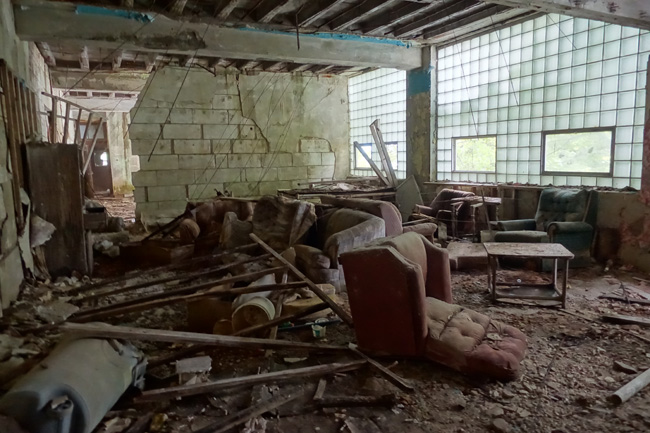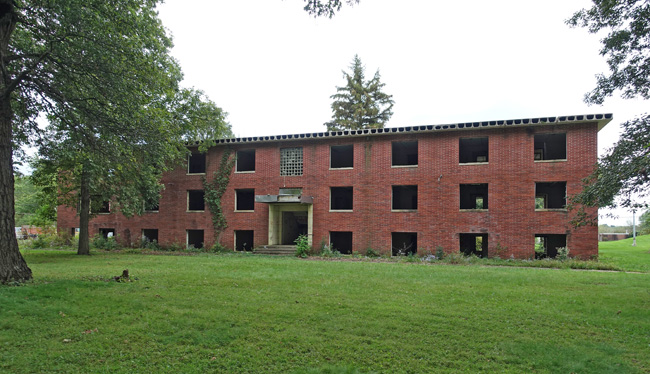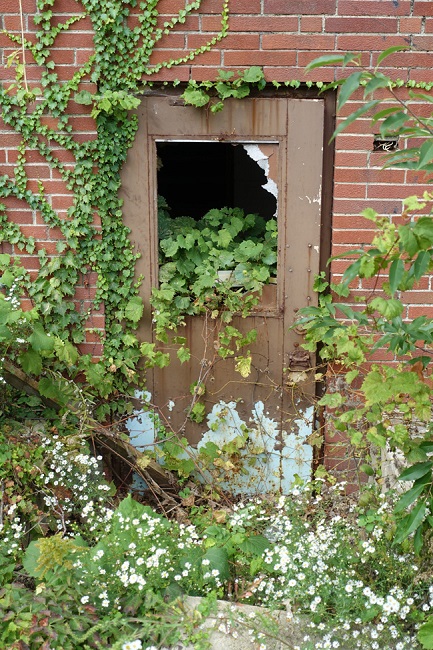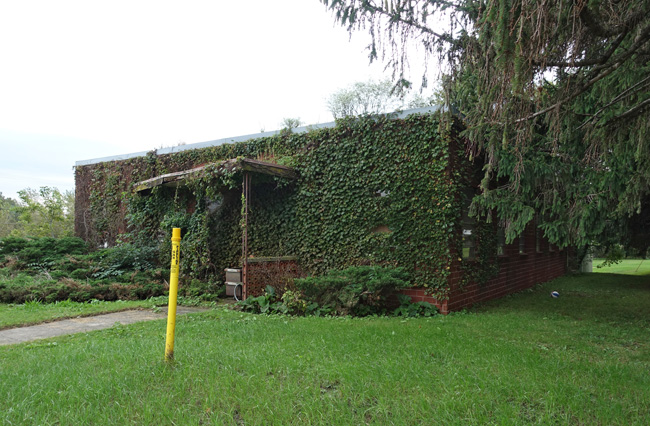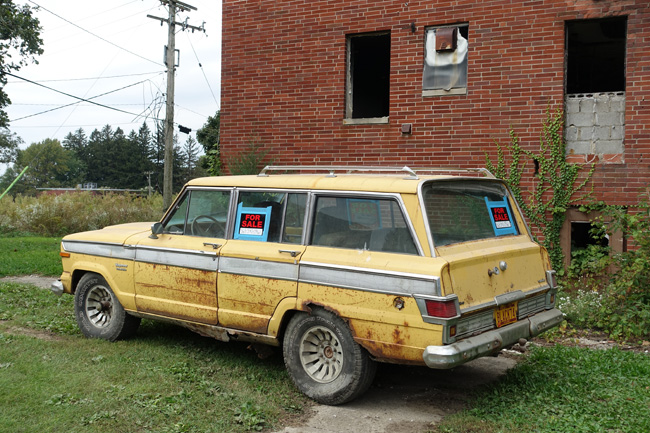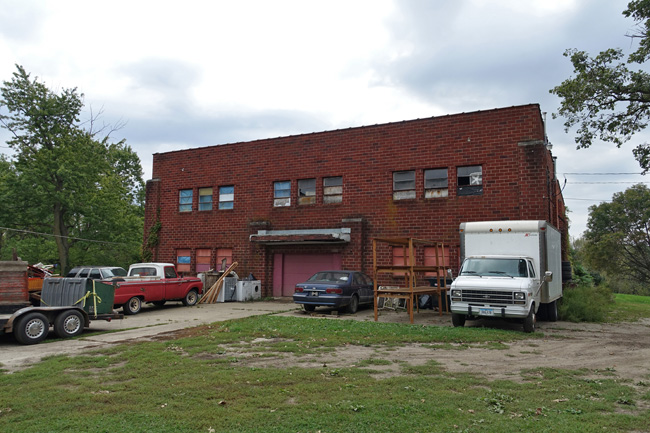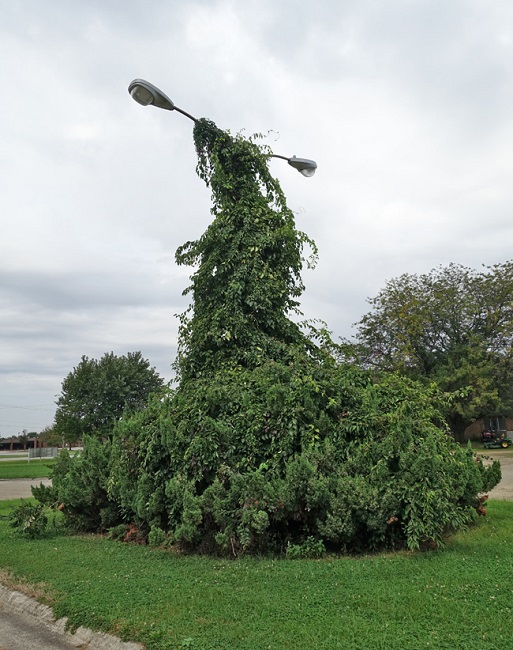The sun touched the horizon behind a cottony layer of clouds as I drove into the small rural town of Clutier, Iowa. After a day of exploring an incredible abandoned brick yard, the ruins of an old boarding school, and a beautiful decimated grade school, I wasn't quite ready to call it a night.
Despite my exhaustion, I couldn't resist the urge to check out a couple more abandoned schools before I ran out of daylight.
Clutier, Iowa is a neat little town of around 200 people, covering three-quarters of a square mile in the Salt Creek Valley region of Tama County. Founded in 1900 by William E. Brice, the town was largely settled by Czech immigrants. Clutier is still known for its Czech cuisine and summertime polka concerts as well as its annual Bohemian Plum Festival.
Clutier Public School was built in 1925 and in 1961, merged with Traer School to become Traer-Clutier. The consolidation of local school districts continued, and in 1965 Dinsdale Community School joined, forming North Tama County Community School District.
It was remarkably difficult to find much information on the history of the school, probably because of the large number of small-town schools in Iowa that closed due to consolidation.
After a lot of digging, I managed to find out that Clutier Public School had a very talented young women's basketball team called The Chargin' Czechs. From 1939 to 1948, they achieved a 201-18-1 record and took part in the state tournament six times.
1942 was an exceptional year for the Chargin' Czechs. They were undefeated, winning 31 games and the Iowa Title. Clutier's Betty Mundt was the state tournament’s top scorer that year, with 75 points in four games.
The team's memory still lives on. In 2007, the mayor of Clutier proclaimed September 15 as Chargin’ Czech Day and a monument was built in their honor at the town entrance. The Iowa Hall of Pride in Des Moines has dedicated part of its "Six-Girl Basketball in Iowa" display to the 1942 team, including a team photo, the championship trophy, a team uniform, and the white basketball that was used during their time.
The classrooms of the old school are now water-damaged, but surprisingly still intact, a stark contrast to Searsboro Consolidated School, which is in far worse shape.
Despite the lack of graffiti, smashed windows are a sign that Clutier Public School has not been entirely spared from vandalism.
Attempts were made to cover some of the broken windows, but the effort was apparently abandoned some time ago.
A bed of moss now covers the carpeted floors of the old classrooms.
Small plants grow up from the mushy layer of decaying carpet.
Rotting doors hang loosely from decaying frames. The drywall has fallen off in chunks, revealing sturdy brick walls.
Light fixtures still hang in a few rooms where ceiling tiles have not yet come loose.
A staircase stained from decades of flooding leads down to a spooky cafeteria.
The tiles have peeled up from the floor, forming a layer of brittle, curled rectangles.
The kitchen is bare, except for a stainless steel sink leaning against the wall.
By the time I finished admiring the old school the sky had grown pitch dark, but there was still one more school I wanted to check out before embarking on the long drive into Illinois.
A few miles from Clutier lies the town of Dysart, home of the abandoned Dysart-Geneseo Consolidated School. I knew the property was off limits, but I wanted to capture a few shots of the school from afar, if possible.
I parked along the side of the road and could barely make out the old structure in the near-total darkness. I got out my tripod to experiment with some long-exposure photography. I managed to get a decent shot of the school and teachers' dormitory. The pictures turned out a little blurry, but were shockingly bright as if I'd taken them in the middle of the day.
While I stood there with my tripod, a truck drove by, slowing slightly as it passed me, and then pulled into the driveway of the only nearby house. Just as I was getting ready to leave, two cop cars showed up, blinding me with their lights. The police told me someone had reported suspicious activity. It was obvious who had made the call, since only one vehicle had passed during the short time I was there.
I showed the cops the pictures I had taken, to prove that I hadn't trespassed onto the property. They were as amazed as I was at how the photos had turned out. Realizing I'd done nothing illegal, the officers were pretty friendly. I was disappointed that the neighbors had called the police instead of simply stopping to ask what I was up to. I guess that's the sort of mistrustful world we live in, even in small-town America.
I got back on the road and drove for several hours, crossing into Illinois before I stopped to rest for the night. The Rust Belt was just over the horizon and I could hardly wait for the dawn of a new day filled with new places to explore...
Thanks for checking out this article. If you enjoyed it, please feel free to share it on Facebook. While you're at it, please subscribe to Places That Were.
I have quite a few more pictures from Clutier Public School -- too many to include in this article. I'll be sharing them on social media, so be sure to follow me if you'd like to see more:
Facebook: http://www.facebook.com/placesthatwere
Google+: https://plus.google.com/u/0/+JimSullivanPlacesThatWere/posts
EyeEm: https://www.eyeem.com/u/placesthatwere
Instagram: http://instagram.com/theplacesthatwere
Twitter: https://twitter.com/placesthatwere/
Tumblr: http://placesthatwere.tumblr.com/
Youtube: https://www.youtube.com/jimplicit
500px: https://500px.com/placesthatwere
Thank you!
